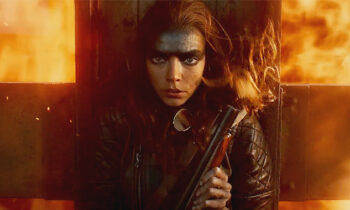Teen Titans: Raven is a Great Comics Debut for Kami Garcia
Over the last few decades, comics’ appeal to younger audiences has decreased more and more. One problem, certainly, is that younger audiences are more inclined to buy a graphic novel, or collected volume, then they are single issues. This is an age of binge-watching. Oddly, it’s an age where kids want to be engaged in something for a lengthy period of time. They can watch 9 hours of Stranger Things in 2 days. And the industry expects them to read just 20 pages of a story, once a month, for three to six months? It doesn’t work anymore. But now we have something that can work for Young Adult readers, and hopefully the first of many: Kami Garcia and Gabriel Picolo’s Teen Titans: Raven.
Teen Titans: Raven Is Pure YA Fiction

There are definitely comics out there suitable for young adults, such as G. Willow Wilson’s Ms. Marvel and Gail Simone’s Batgirl, but they both straddle the line of YA, but appealing to an older audience (in the case of Ms. Marvel), or the other way around: Adult but appealing to YA (Batgirl). Kami Garcia’s Teen Titans: Raven is unapologetically YA. It has all the teen drama of young romance, forming friendships, angst, coming-of-age, and even a Prom.
It’s also very much written for a young adult female audience. That shouldn’t be surprising. Before Teen Titans: Raven, Kami Garcia was best known for Beautiful Creatures, a best-selling, critically acclaimed YA series and a box office bomb. However, just because it’s written for that audience doesn’t mean it’s only for that audience. Case in point: Me. I’m a 34-year-old guy. I am definitely not the target demographic. I mainly read this to see if it would be good for my 10-year-old niece (I think it is) and review it. Now I’m thinking I’ll have to buy another copy because I’m keeping this one.
Of All the Teen Titans, why Raven?

One reason is because Raven is Garcia’s favorite Teen Titan. In her intro, she recalls:
When DC approached me about writing for them, the Teen Titans came to mind. Why write just one book when I could write a series about a group of badass teens—beginning with my favorite member, Raven?
Teen Titans: Raven, Kami Garcia and Gabriel Picolo, DC INK
Reading Teen: Titans: Raven, it’s clear that Garcia has a deep connection to the character. What Garcia taps into best is how Raven struggles so much with finding her place. Who hasn’t struggled with that in high school? Because of an accident, Raven lost her memory and has to decide who she is while rediscovering aspects of herself. There’s a wonderful scene where a boy she likes brings her a bag of candy bars so she can sample each one until she finds the one that used to be her favorite. In high school, we discover a lot about ourselves. Imagine having to rediscover what your favorite foods were at the same time!
Gabriel Picolo and David Calderon Capture YA Prose in Sequential Art
YA prose has certain qualities and tricks, just like any form of prose literature. While Garcia has the YA storytelling mastered, Teen: Titans: Raven would not work without Gabriel Picolo. This is a YA book in art just as much as it is in writing. Thanks to Calderon, we also get a fun black and white comic with splashes of color—mostly purple, of course. In fact, through the book, Raven is often the only character with any color, even it’s just the purple in her hair. This makes Raven stick out even more, drawing our attention to her every time she’s in the panel. It helps us to focus, sure, but it further isolates Raven too, in a storytelling technique.
Coming Soon to Schoolrooms Everywhere
I teach graphic novel literature for college students—mainly graduate students in an MFA program. They’re often shocked at how “adult” the themes are, and then ask if there are good graphic novels they can suggest for middle or high school students. Garcia and Picolo’s Teen Titans: Raven is the answer to that question (not the only one). This is a great graphic novel to teach, and is age suitable (my class is reading Mister Miracle by Tom King right now which is definitely not suitable for a middle school kid). It’s also a single volume, told as one continuous story, not a collected edition. The pacing and chapter breakdowns work much better for a young reader than a standard graphic novel that has generally six issues collected. Kids will love this book—that alone can help teachers get them talking and writing about it.
Grade: A
What’s next?

After Teen Titans: Raven, Garcia and Picolo are teaming up again for Teen Titans: Beast Boy…which doesn’t come out for another year. Kami, Gabriel, we love that you’re doing a series of Teen Titan books, but maybe give us two books a year? Kthnxbai (I’m totally hip, yo!).
Roman Colombo finished his MFA in 2010 and now teaches writing and graphic novel literature at various Philadelphia colleges. His first novel, Trading Saints for Sinners, was published in 2014. He's currently working on his next novel and hoping to find an agent soon.









Leave a comment